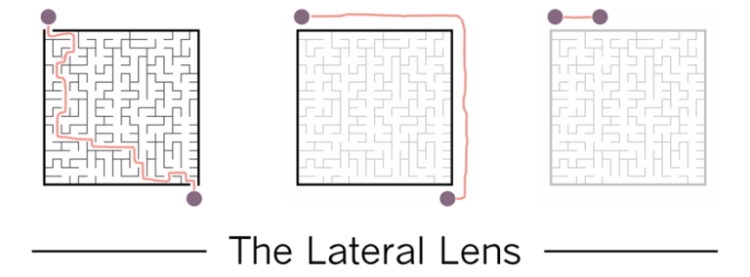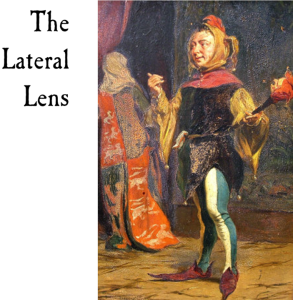
You may have heard of the book I’m OK — You’re OK. It was all the rage in the late 60s and is still popular today. It’s about Eric Berne’s theory of Transactional Analysis and his concept of games, but added to the dialogue the idea that drama and games largely stem from an underlying sense of “not OKness.”
The basic idea is simple. How do you tend to feel about yourself? About others? These two things, together, can be shown as a 2×2 grid. You may tend to “hang out” in one quadrant of the matrix more than others. This is your “life position.” The aim, obviously, is to spend as much of your time in the top right as possible (adapted from Mountain & Davidson, 2016).

Leaving the top right and abandoning your sense of OKness — of both yourself and others — is when you veer into drama. More drama, more games. Below, psychologist Taibi Kahler makes the same point in terms of his “four myths.” Like Thomas Harris’ (1967) I’m OK — You’re OK, Kahler’s work grew out of Berne’s theory of TA, chiefly popularized by his 1964 book, Games People Play. (Image adapted from Regier, 2017.)

To paraphrase Kahler, “Maturity is the avoidance of drama.” Another related concept is Karpman’s Triangle. In 1965, Stephen Karpman was drawing diagrams to figure out ways a quarterback could outsmart the defensive halfback in American football.
He started applying his diagrams to the depiction of drama in stories. In 1967, around the time Berne was talking about fairy tales and working on his follow-up book, What Do You Say After You Say Hello?, Karpman saw the film Valley of the Dolls. He realized that the drama in the movie largely took the form of the role and location switches of the characters.

Karpman then took Berne’s TA and replaced its ego states of Parent, Adult, and Child with the roles of Victim, Persecutor, and Rescuer, creating what Berne dubbed “Karpman’s Triangle.” Karpman started a paper about his concept and sent a draft to Berne. Berne sent back a copy, presumably with revisions, and told Karpman over the phone, “People are going to quote you on this for two hundred years so you might as well get it right the first time” (Karpman, 1972).
Though that remains to be seen, here we are talking about it more than 50 years later. Here’s the triangle (below). You may be familiar with it already. It’s in lots of books, and Michael Bungay Stanier discusses it in his recent bestseller, The Coaching Habit.

All of these concepts are about drama and how to avoid it. Notice how both Harris’ concept of life positions and Kahler’s four myths can be shown in terms of Karpman’s Triangle (with two of Kahler’s myths mapping onto the Victim role). If the triangle represents “drama,” then staying in the position of “I’m OK — You’re OK” is the avoidance of drama.
You’re fine. You don’t need rescuing. They’re fine. They don’t need you to fix them. Nobody should be persecuting. As Dustin Hoffman’s character says in Papillon, “Blame is for God and small children.” Even if you’re there to coach, to advise, then you’re there to help people own and solve their own problems. You’re there to help people do their own magic.

Let’s take a deeper look at the three roles on the triangle (descriptions adapted from Regier, 2017; Wick, 2017).
Victims start from an “I’m not OK” or “one-down” position. As Regier notes, they tend to be unassertive, avoid conflict, and are filled with self-doubt. They also go out of their way to accommodate and overadapt to others, making them prone to overworking.
The payoff for the role is that they get to attract Rescuers to swoop in and save the day, but at the expense of always feeling like change is outside their control. Cultures with high Victim mentality have low morale, low engagement, and low respect for leadership.
Persecutors are starting from the position of “I’m OK — you’re not OK.” Since they believe others are not OK, they feel it’s fine to use coercion and manipulation to get what they want. Persecutors tend to be sarcastic, rigid, and self-righteous. They are quick to blame, guilt, criticize, and use coercion and ultimatums to get their way.
The payoff is they get to feel powerful, but at the expense of perpetuating victimhood, being a jerk, and ending up responsible for everything. Cultures with high Persecutor mentality have a lot of secrecy, hiding, manipulation, and blame shifting. They tend to be very cutthroat.
Rescuers start from the position of “I’m OK and you’re not…but you would be if you’d just do what I say.” Rescuers are quick to point out what’s wrong and offer unsolicited advice. They tend to have a “my way or the highway” attitude. Regier notes they tend to be smooth-talkers and often have unrealistic expectations.
The payoff is they get to feel indispensable, but at the expense of perpetuating drama and often being a meddler. Cultures with high Rescuer mentality have a high fear of failure, low innovation, and typically suffer from “death by meetings” (or data). One of the things Berne and Karpman noticed is that in many traditional fairy tales, the “heroine” is playing Victim and the “hero” is playing Rescuer.

OK, so how does this help you avoid drama? Well, if you’re “in drama,” then you’re playing one of the above roles on the triangle. You may tend to inhabit one role over others, but you’ll play all three roles at different times. You’ll even switch between roles in a single interaction, which is how Karpman represents Berne’s concept of “games.” (We’ll do a deeper dive into Berne’s treatment in a future post.) Below is an example.
Sam is playing the Victim role. He feels unable to solve a problem. He’s looking for a Rescuer to come relieve him of the need to stop playing Victim. Sally, playing Rescuer, swoops in and advises Sam on what to do. She is super “helpful.”
It doesn’t quite work out the way it was “supposed to,” however, and so Sam switches roles to Persecutor, now blaming Sally for the failure. Sally switches roles to Victim. She was just trying to help, even though she was enabling Sam’s drama. There will likely be fight over who should be dinged on their year-end review because of this, but none of this drama is value-adding in the larger scheme of things.

If you’re a manager, this is definitely a dynamic you should be paying attention to. Are the people considered “rock stars” really just perpetuating drama? Are they Rescuers who surround themselves with Victims? Or are they Persecutors who go in, throw their weight around, take all the credit, and then leave scorched earth behind them? Neither are good or value-adding.
If you’re a consultant, coach, or designer, it can be especially easy to fall into the trap of playing Rescuer. Notice this is different from actually being helpful. (Stated another way, “Not all helping is helpful.”) When you play Rescuer, you frame the other as Victim. You rob them of their autonomy. They have the problems they have because they haven’t worked with you yet. You aren’t helping them solve their problems; you’re perpetuating their dependency. That’s what bad consultants do — they “land and expand.” (If you’ve experienced this, then just reading this may leave a bad taste in your mouth.)
Let’s close with a key point from Nate Regier. If you work in an org where your leaders are in drama, then their behavior will create cultures of drama. The consequences are expensive (see Mountain & Davidson, 2016). Think about it. Meetings will themselves contain more drama. They will tend to be longer and less productive. Trust will be lacking and the environment perceived as psychologically unsafe (because it is). There may be fewer real leaders at every level and lower respect for leadership overall. Decision making — typically the real constraint in the system — will be slower. What is really being incentivized is not innovation but hiding.
Interestingly, Regier argues, you might think it’s most common for an org leader to play Persecutor. Not so, he says. It’s more common for the org leader to play Victim and surround herself with Rescuers. She’ll turn Persecutor only when staff fails to sufficiently rescue.

References
Berne, E. (1972). What do you say after you say hello?: The psychology of human destiny. New York: Grove Press, Inc.
Berne, E. (1964). Games people play: The psychology of human relationships. New York: Grove Press, Inc.
Harris, T. A. (1967). I’m OK — you’re OK. New York: HarperCollins Publishers Inc.
Karpman, S. (2007). The new drama triangles. Presented at USATAA/ITAA. Retrieved on March 6th, 2019 from: http://karpmandramatriangle.com/pdf/thenewdramatriangles.pdf.
Karpman, S. (1972). Eric Berne memorial scientific award lecture. Retrieved on December 3, 2019 from: https://karpmandramatriangle.com/pdf/AwardSpeech.pdf.
Mountain, A. & Davidson, C. (2016). Working together: Organizational Transactional Analysis and business performance. New York: Routledge.
Regier, N. (2017). Conflict without casualties: A field guide for leading with compassionate accountability. Oakland, CA: Berrett-Koehler Publishers, Inc.
Stanier, M. S. (2016). The coaching habit: Say less, ask more & change the way you lead forever. Toronto: Box of Crayons Press.
Wick, D. A. (2017). Drama triangle inhibits productivity; limits employee engagement. Strategic Discipline Blog. Retrieved on December 2, 2019 from: https://strategicdiscipline.positioningsystems.com/blog-0/drama-triangle-inhibits-productivity-limits-employee-engagement.
3 thoughts on “Drama Part 1: Recognizing (And Avoiding) Drama”